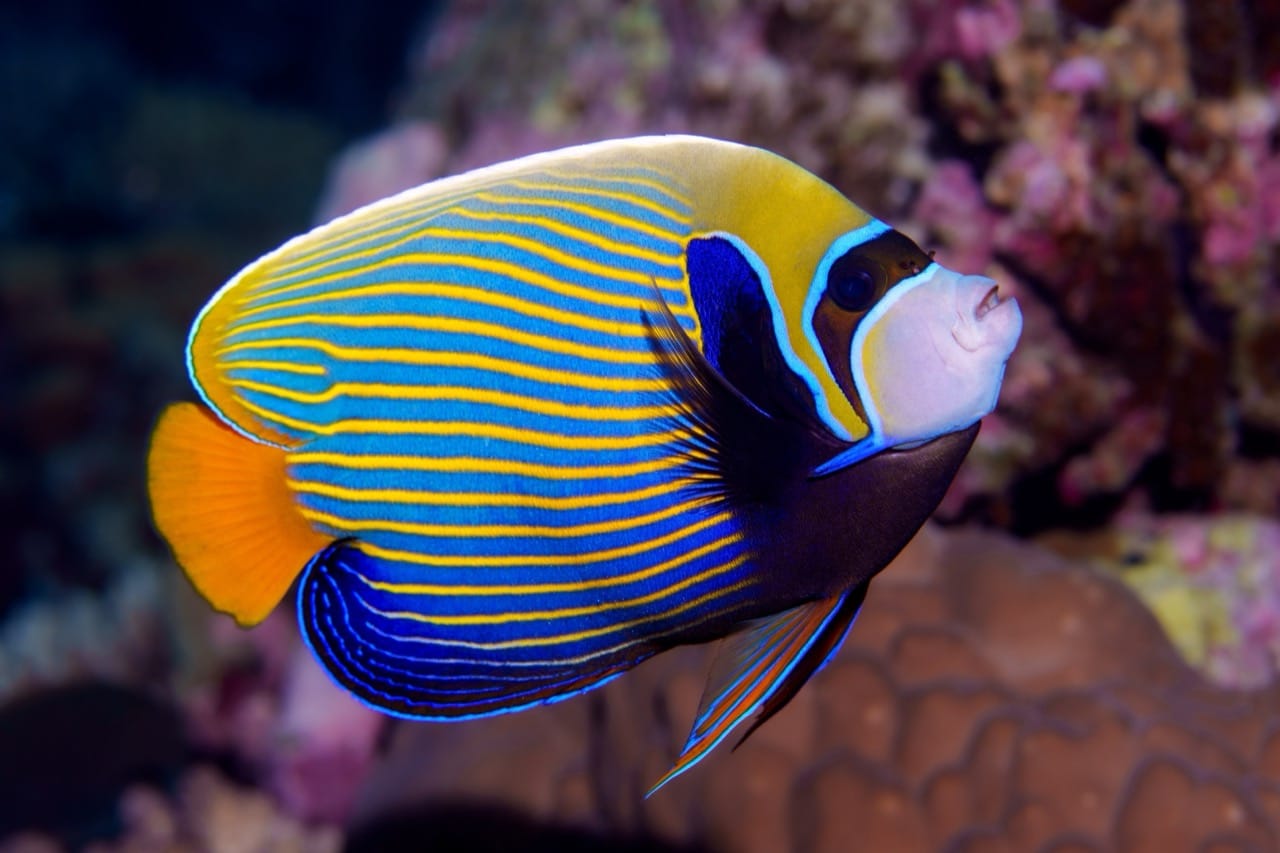The Emperor Angelfish, known scientifically as Pomacanthus imperator, is a vibrant spectacle of the ocean that captures the attention of both divers and aquarists around the world. This fish is not only admired for its striking appearance but also for its complex behavior and fascinating life cycle. Its presence in tropical waters is a reminder of the rich biodiversity and the delicate balance within marine ecosystems. Let’s dive into the world of the Emperor Angelfish and discover what makes this marine creature a jewel of the sea.
Characteristics / Physical Description
The Emperor Angelfish boasts a bold and colorful design that makes it one of the most visually captivating species in the ocean. Adults typically display a brilliant blue body adorned with bright yellow and black vertical stripes, which serve to confuse predators and assist in camouflage among the coral reefs. Juveniles, however, exhibit a dramatically different pattern with dark blue bodies featuring electric blue and white rings, which gradually change as they mature. This transformation is not only a marvel of nature but also a testament to the adaptive strategies of marine life.
Taxonomy and Classification
Belonging to the family Pomacanthidae, the Emperor Angelfish is a member of the order Perciformes, which includes a wide variety of fish species commonly found in warmer waters. This species is closely related to other angelfishes, known for their flattened bodies and small, rounded fins. Despite their common name, angelfishes are distinct from the freshwater angels (family Cichlidae) often seen in aquariums.
Behavior and Social Structure
Emperor Angelfish are somewhat solitary but can also be found in pairs, especially during breeding season. They are territorial and often defend their space vigorously against other fish. The complexity of their social interactions includes a variety of behaviors such as ritualized displays of dominance and submission.
Habitat and Distribution
This species is typically found in the coral reefs of the Indo-Pacific region, from the Red Sea to Hawaii and the Great Barrier Reef. They prefer lagoon and reef environments where coral and rocky outcrops provide protection and feeding opportunities. The depth range of their habitat extends from shallow waters to depths of about 100 meters.
Diet and Feeding Habits
The diet of the Emperor Angelfish primarily consists of sponges and algae. They are equipped with strong jaws that allow them to remove small portions of food from hard surfaces. Occasionally, they may also consume small invertebrates, adding variety to their diet. This feeding strategy plays a crucial role in the health of coral reef ecosystems, as it helps control algae growth and provides a balanced environment.
Breeding and Reproduction
Breeding behaviors in Emperor Angelfish include complex rituals of courtship in which color intensification and specific swimming patterns are observed. They are known to form monogamous pairs during the breeding season. The female releases eggs into the water column, which are then fertilized by the male. These pelagic eggs quickly hatch into larvae, which will spend a period drifting in the ocean currents before settling into the reef environment and beginning the juvenile phase of their life cycle.
Relationship with Humans
Emperor Angelfish are popular among marine aquarists for their vibrant colors and majestic presence in saltwater aquariums. However, their care requires a well-maintained tank with ample space and appropriate diet, highlighting the need for responsible pet ownership and awareness of the species’ needs. Conservation efforts are important to ensure that natural populations are not threatened by overfishing for the aquarium trade.
Evolutionary History
The evolutionary history of the Emperor Angelfish is marked by adaptations to reef life, including changes in body shape, feeding mechanisms, and social behavior that have enabled them to thrive in diverse and competitive ecosystems. Their evolutionary path reflects the dynamic and ever-changing environment of coral reefs, showcasing the resilience and adaptability of marine species.
Emperor Angelfish serve as a vibrant reminder of the beauty and complexity of marine life. Their presence in the oceans adds to the rich tapestry of biodiversity that sustains the marine ecosystems essential for global health and ecological balance.

